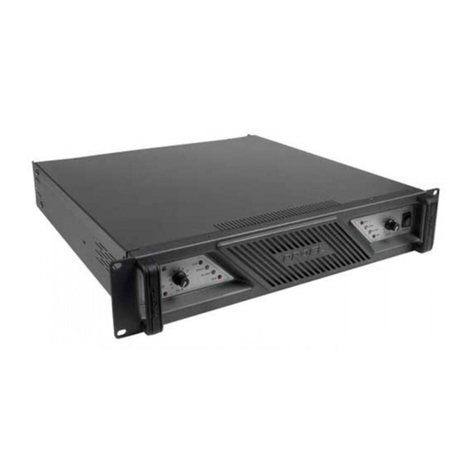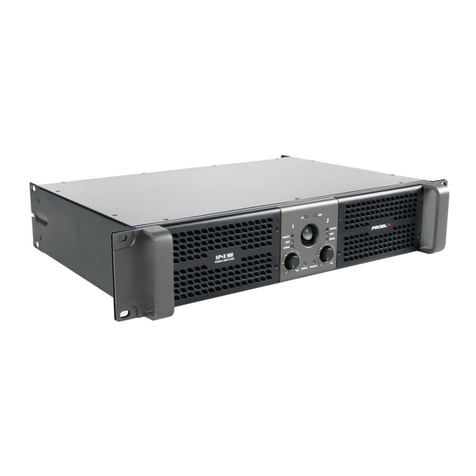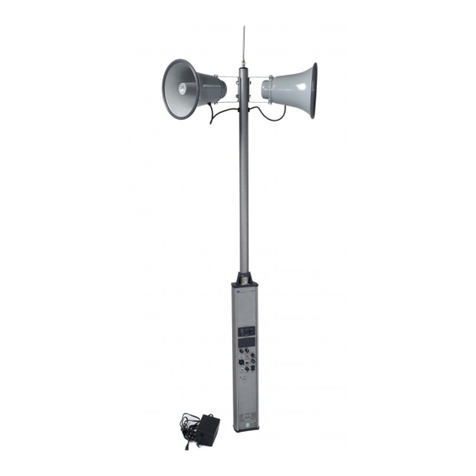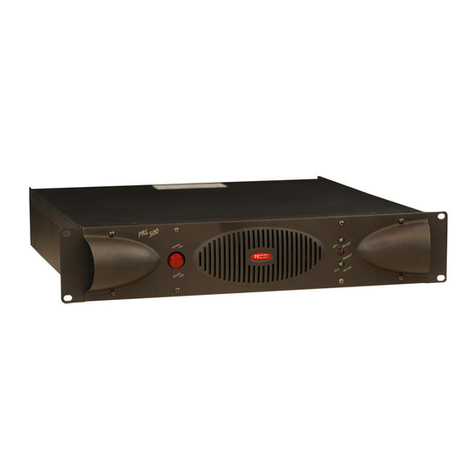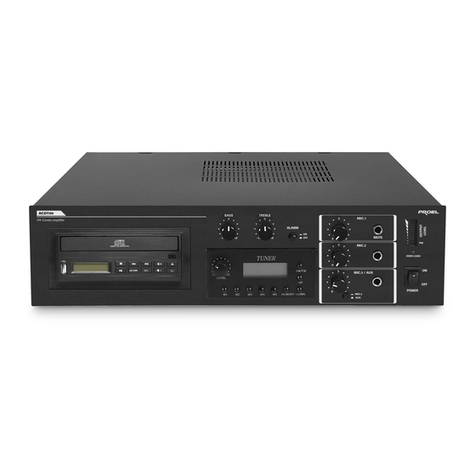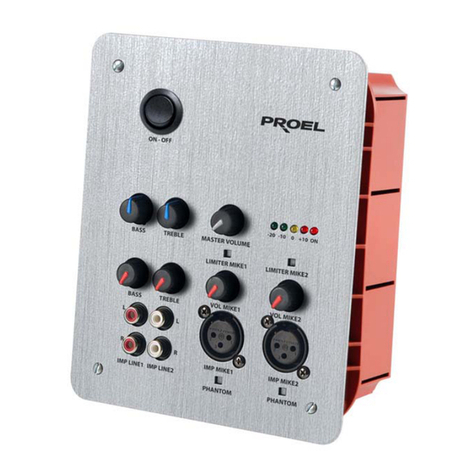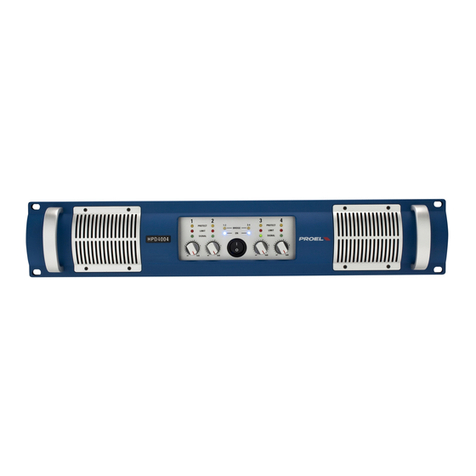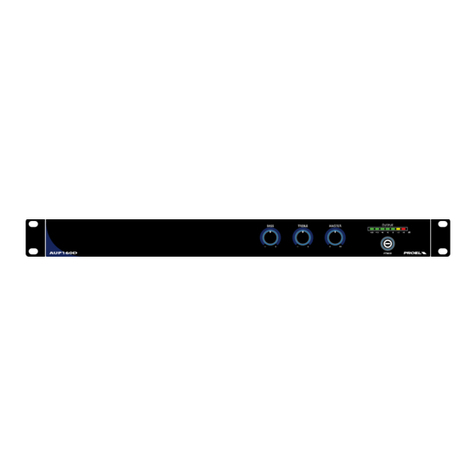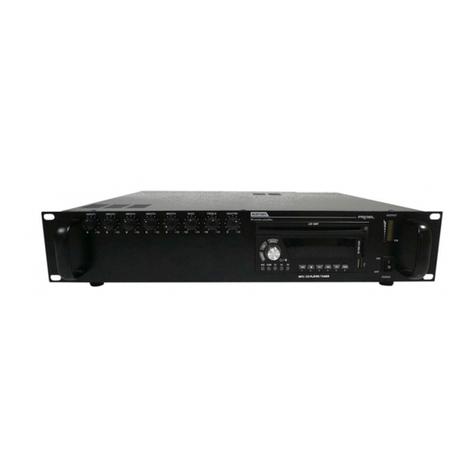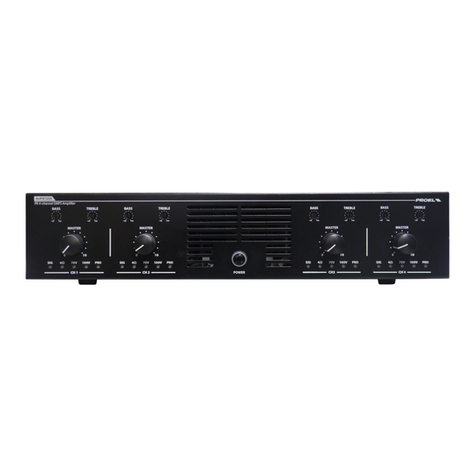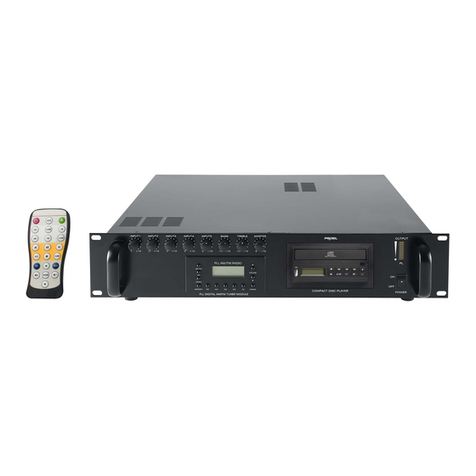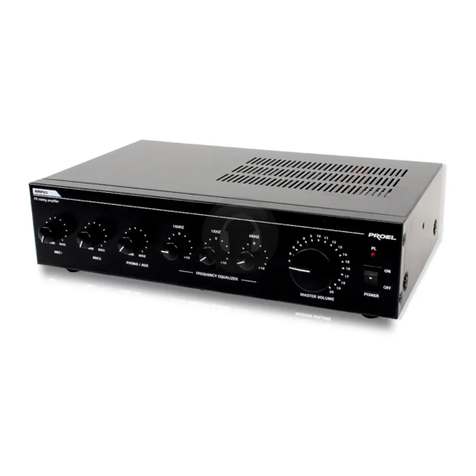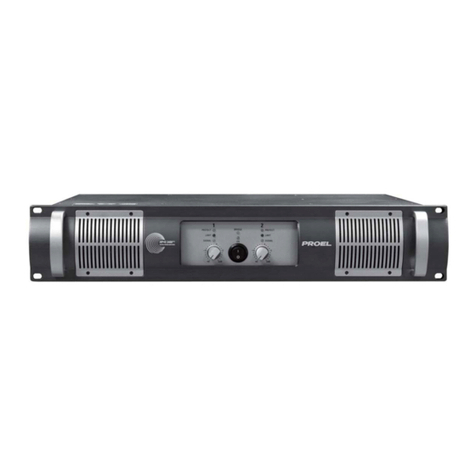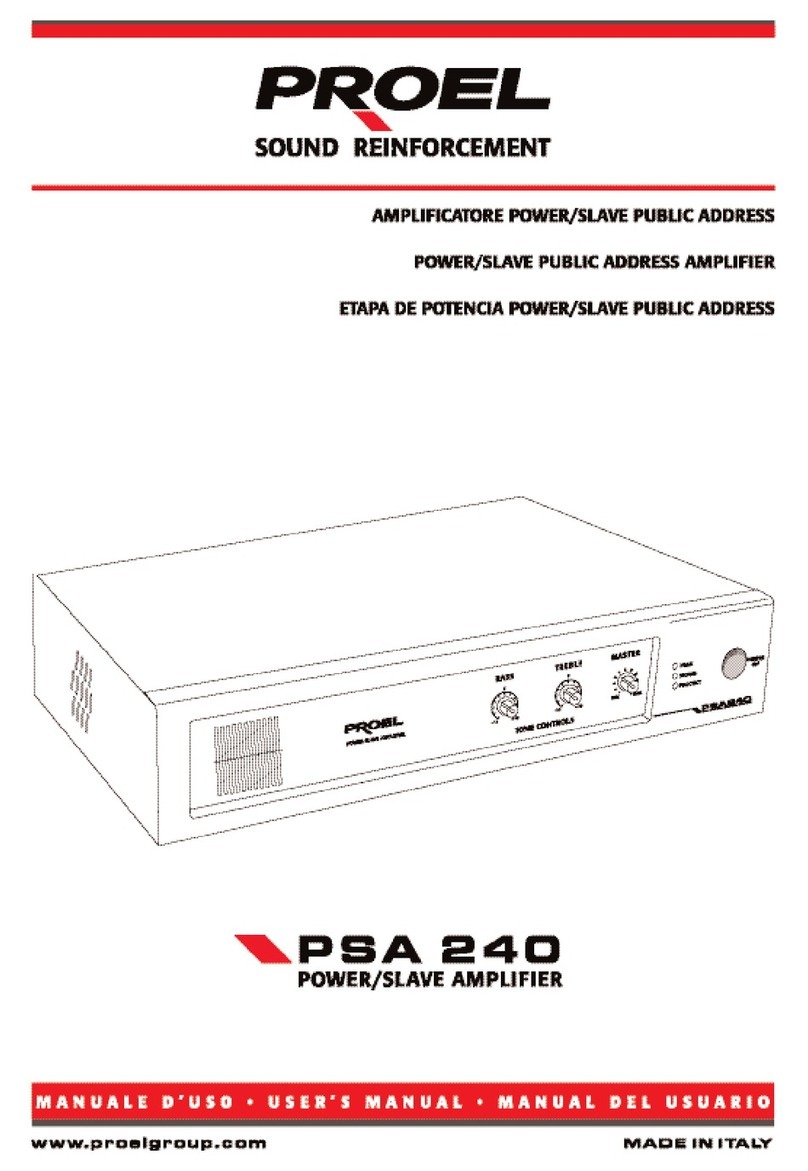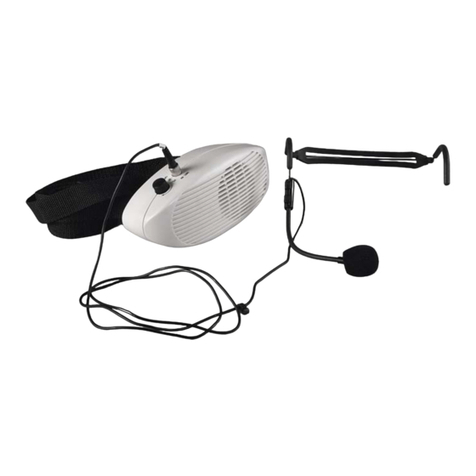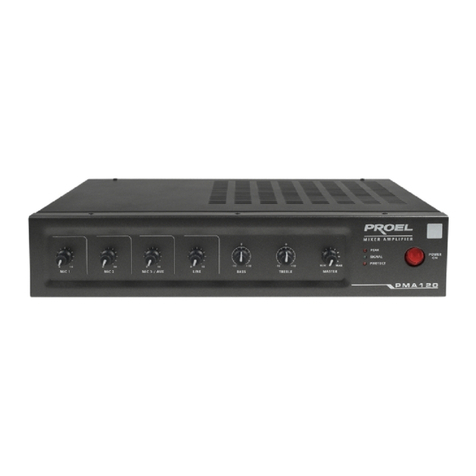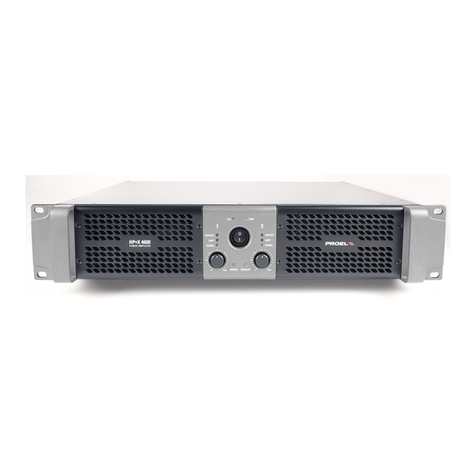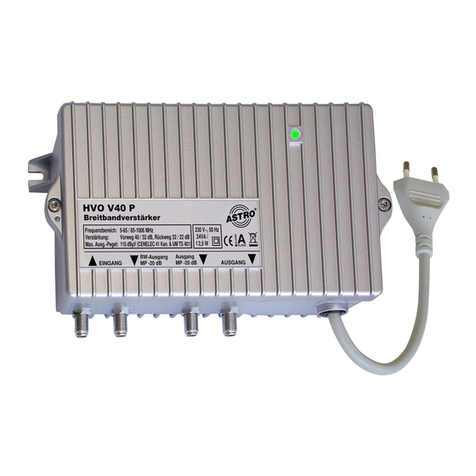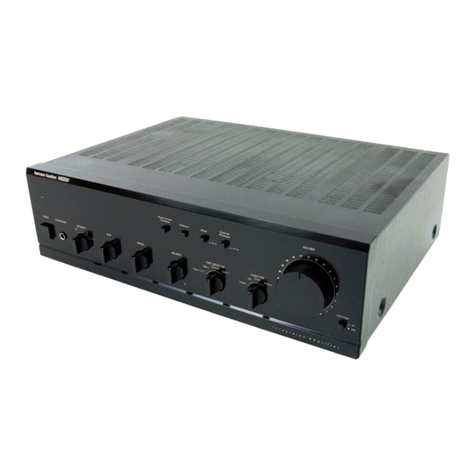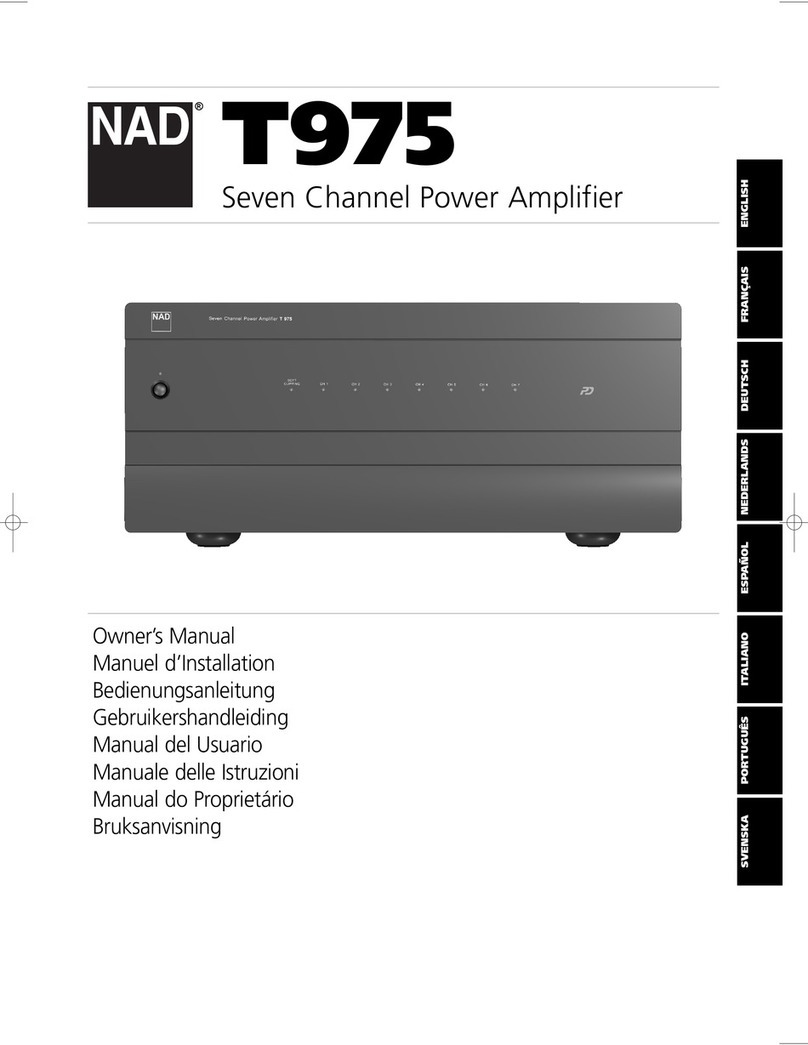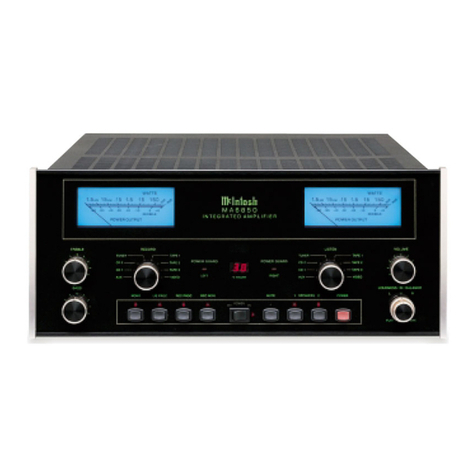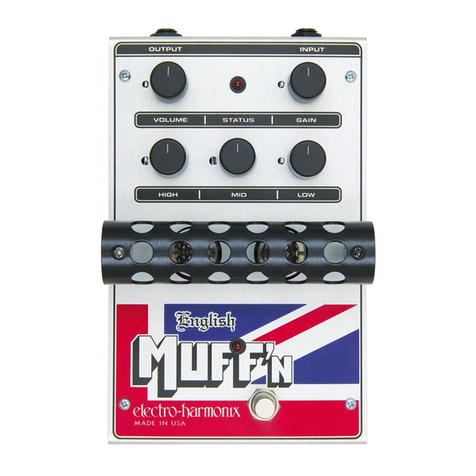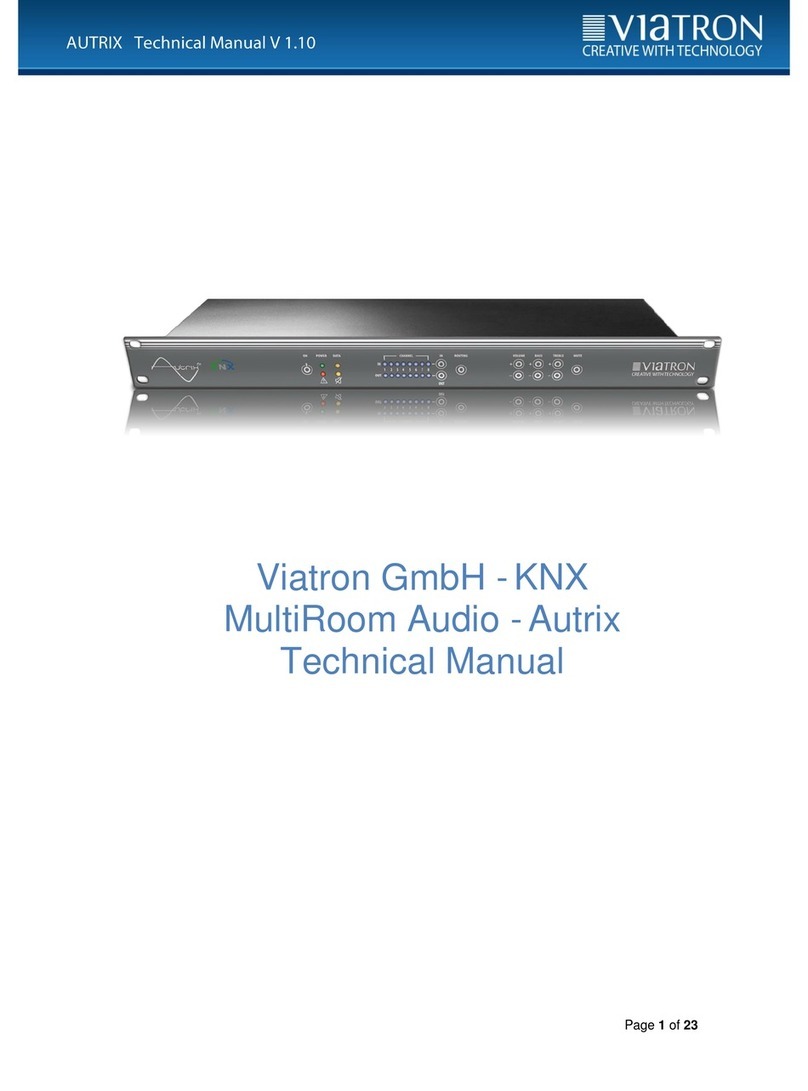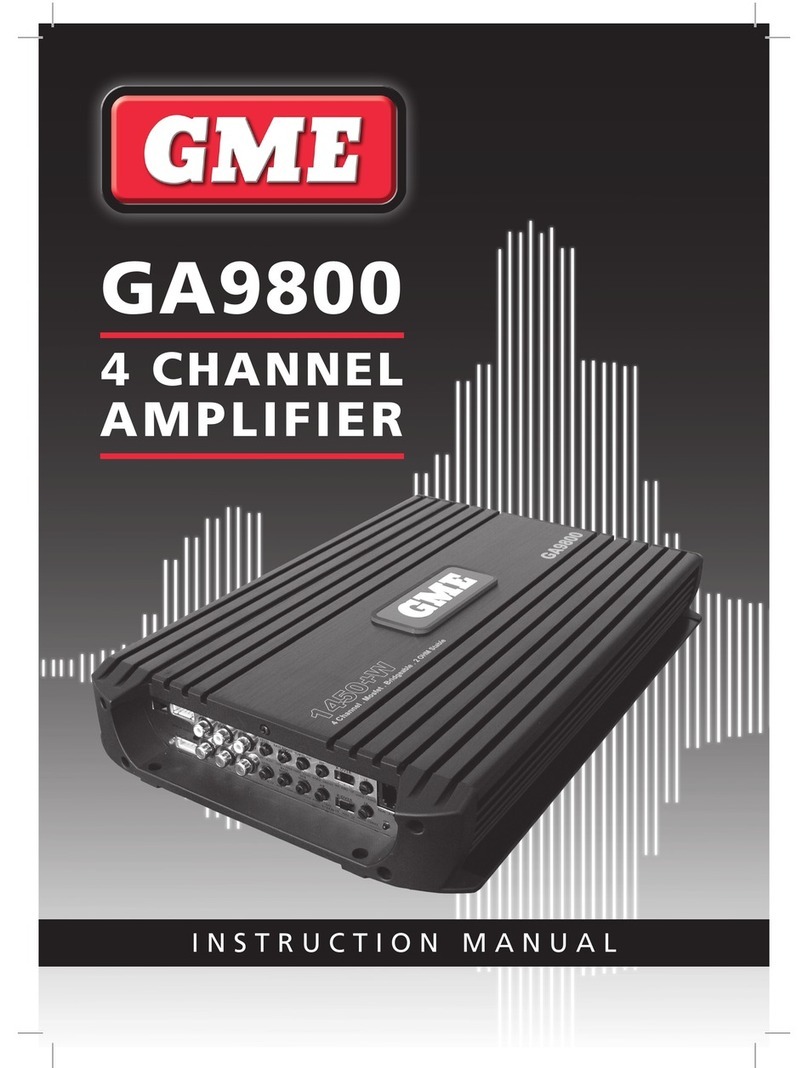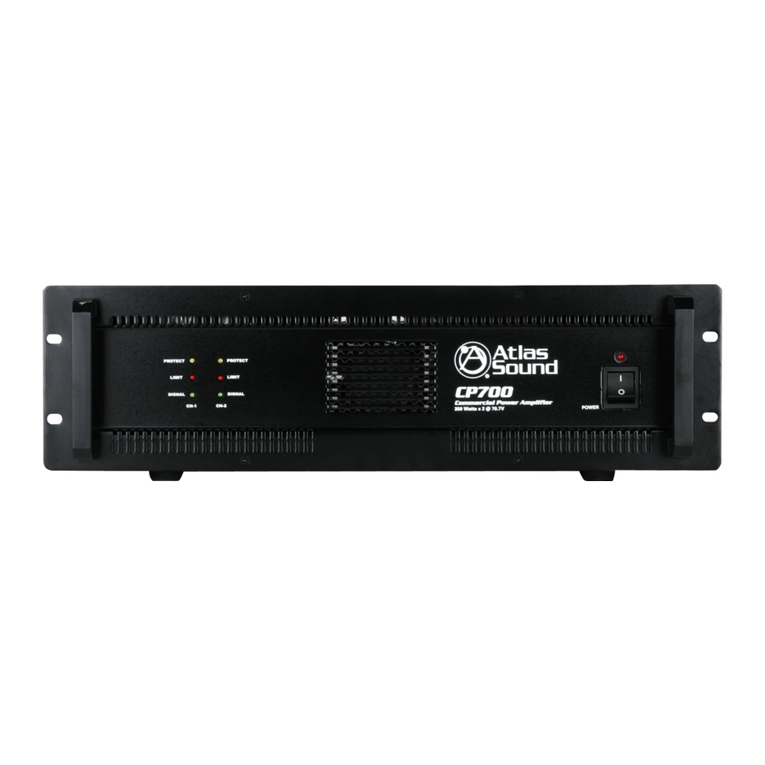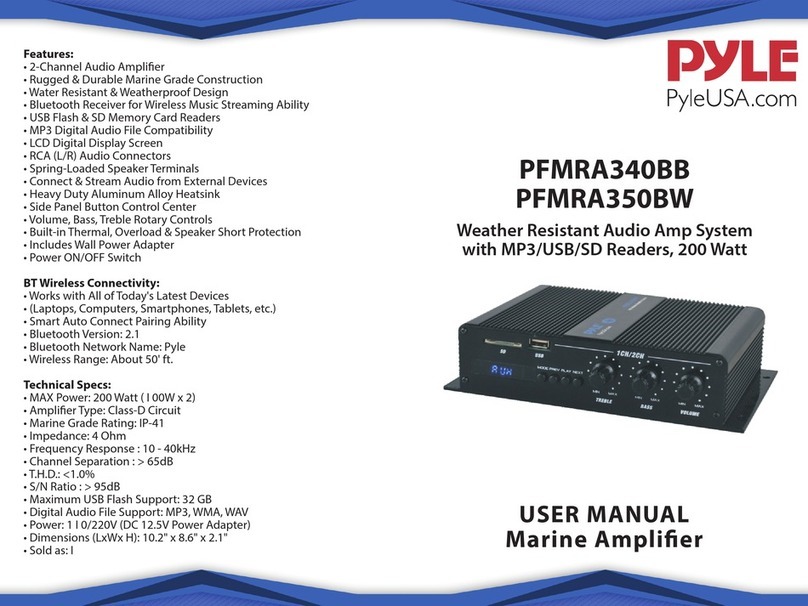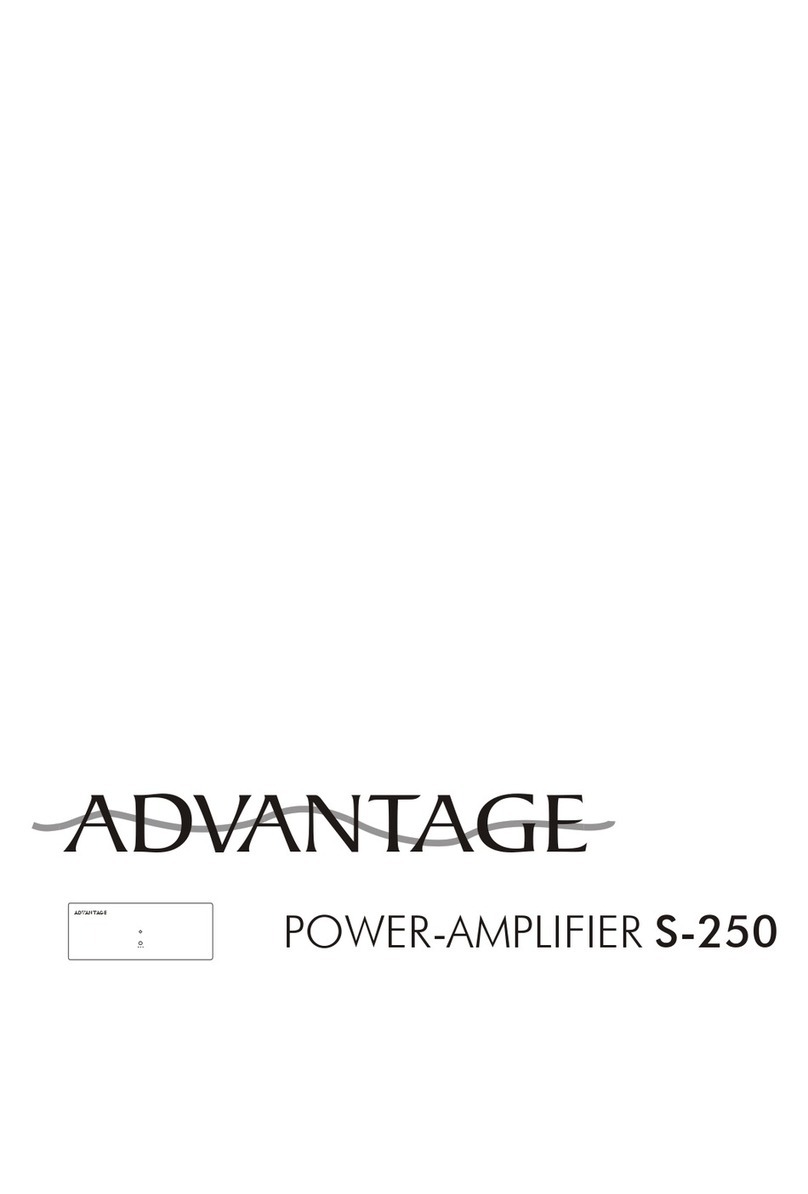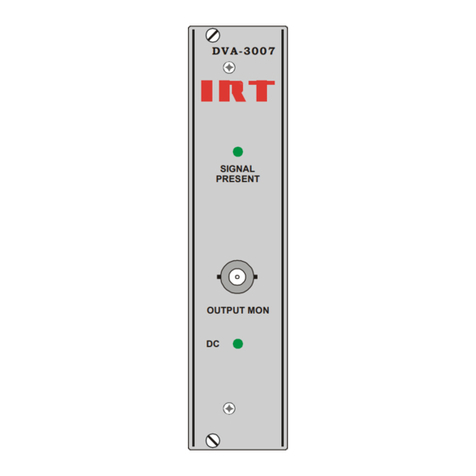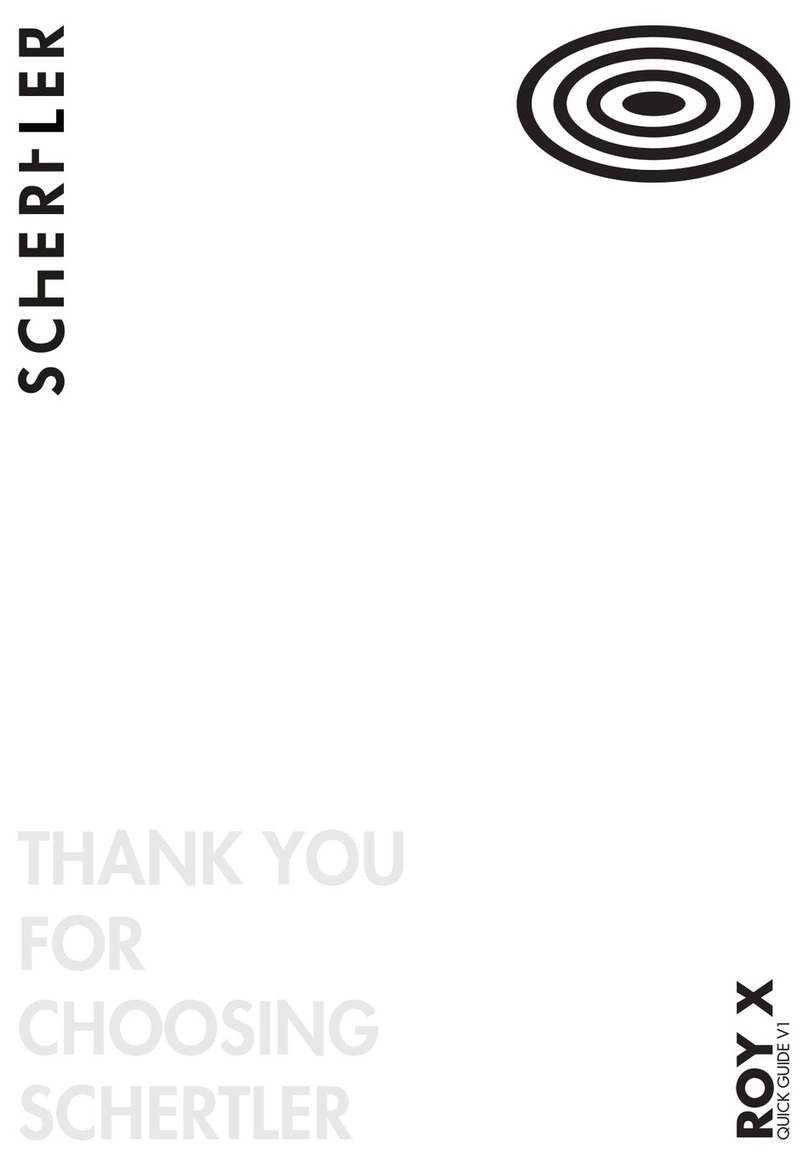
3
INDEX
TECHNICAL SPECIFICATIONS. . . . . . . . . . . . . . . . . . . . . . . . . . . .3
SETUP AND RACK MOUNTING (FIG. 1) ...................4
LOUDSPEAKER CABLE .................................4
CONNECTIONS ......................................5
FILTER RESPONSE (FIG.2) ..............................5
DIMENSIONS (FIG.3) ..................................6
FRONT PANEL (FIG.4) .................................6
REAR PANEL (FIG.5) ..................................7
EXAMPLE A .........................................8
EXAMPLE B .........................................8
EXAMPLE C .........................................9
EXAMPLE D .........................................9
SAFETY AND PRECAUTIONS .......................... 10
IN CASE OF FAULT .................................. 10
TROUBLESHOOTING ................................ 10
CE CONFORMITY ................................... 11
PACKAGING, SHIPPING AND COMPLAINT ............... 11
WARRANTY AND PRODUCTS RETURN .................. 11
INSTALLATION AND DISCLAIMER ...................... 11
POWER SUPPLY AND MAINTENANCE .................. 11
GENERAL INFORMATION ............................ 12
INSTRUCTIONS .................................... 12
INDICE
SPECIFICHE TECNICHE ................................3
INSTALLAZIONE A RACK (FIG. 1) .........................4
CAVO ALTOPARLANTE .................................4
CONNESSIONI .......................................5
RISPOSTA FILTRI (FIG.2) ...............................5
DIMENSIONI (FIG.3) ..................................6
PANNELLO FRONTALE (FIG.4) ...........................6
PANNELLO POSTERIORE (FIG.5) .........................7
ESEMPIO A .........................................8
ESEMPIO B .........................................8
ESEMPIO C .........................................9
ESEMPIO D .........................................9
AVVERTENZE PER LA SICUREZZA ...................... 15
IN CASO DI GUASTO ................................ 15
PROBLEMATICHE COMUNI ........................... 15
CONFORMITÀ CE ................................... 16
IMBALLAGGIO, TRASPORTO E RECLAMI ................ 16
GARANZIE E RESI .................................. 16
INSTALLAZIONE E LIMITAZIONI D’USO .................. 16
ALIMENTAZIONE E MANUTENZIONE ................... 16
INFORMAZIONI GENERALI ........................... 17
ISTRUZIONI ....................................... 17
MODEL DPX1200PFC DPX1700PFC DPX2500PFC MODELLO DPX1200PFC DPX1700PFC DPX2500PFC
Channels 2 (single) or 1 (bridge) Canali 2 (singoli) o 1 (ponte)
Power 8 ohm * 350 W 500 W 650 W Potenza Connua 8 ohm * 350 W 500 W 650 W
Power 4 ohm * 600 W 850 W 1250 W Potenza Connua 4 ohm * 600 W 850 W 1250 W
Power BRIDGE 8 ohm ** 1200 W 1700 W 2500 W Pot. Cont. BRIDGE 8 ohm ** 1200 W 1700 W 2500 W
Output Stage Class D Stadio d'uscita Classe D
Frequency response 20 Hz - 20 kHz Risposta in Frequenza 20 Hz - 20 kHz
Input Sensivity +2.2 dBu (1.0 Vrms) Sensibilità Ingresso +2.2 dBu (1.0 Vrms)
Gain 34.0 dB 35.8 dB 37.6 dB Guadagno 34.0 dB 35.8 dB 37.6 dB
Input Impedance 20 Kohm (bal) / 10 Kohm (unbal) Impedenza Ingresso 20 Kohm (bilanciato) / 10 Kohm (sbilanciato)
Input Connectors XLR-F (INPUT) XLR-M (LINK) Conneori Ingresso XLR-F (INPUT) XLR-M (LINK)
Output Connectors NL4 Speakon Conneori Uscita NL4 Speakon
Controls Level, HPF / BI-AMP / FLAT, Stereo / Parallel /
Bridge
Controlli Level, HPF / BI-AMP / FLAT, Stereo / Parallel /
Bridge
HPF/BI-AMP lter LR 24dB / Oct. @ 100 Hz Filtro HPF/BI-AMP LR 24dB / Oct. @ 100 Hz
LED Indicators PROT, LIMIT, SIGNAL meter, ON Indicatori LED PROT, LIMIT, SIGNAL meter, ON
Cooling Variable speed DC fan / front to rear Rareddamento Ventole DC a velocità variabile / fronte a retro
Protecons AC low power, DC voltage, Thermal, Short circuit,
CLIP Limiter, VHF.
Protezioni AC low power, DC voltage, Thermal, Short
circuit, CLIP Limiter, VHF.
Damping Factor > 500 @ 8 ohm Faore Smorzamento > 500 @ 8 ohm
S/N Rao > 100 dB (unweighted) Rapporto S/R > 100 dB (non pesato)
THD+N < 0.15 % Distorsione + Rumore < 0.15 %
Power Supply 100-240 V~ - 50/60 Hz Tensione alim. di rete 100-240 V~ - 50/60 Hz
Max Consumpon 1280 W 1830 W 2910 W Consumo massimo 1280 W 1830 W 2910 W
Rated Consumpon*** 580 W 850 W 1360 W Consumo nominale*** 580 W 850 W 1360 W
Idle Consumpon 30 W 33 W 47 W Consumo inavo 30 W 33 W 47 W
Power Factor 0.97 0.98 0.99 Faore di Potenza 0.97 0.98 0.99
Weight 3.8 Kg
(8.4 lb)
3.8 Kg
(8.4 lb)
4.2 Kg
(9.26 lb)
Peso 3.8 Kg
(8.4 lb)
3.8 Kg
(8.4 lb)
4.2 Kg
(9.26 lb)
Dimensions (W x H x D) 483 x 89 x 255 mm (19 x 3.5 x 10 inch) Dimensioni (LxAxP) 483 x 89 x 255 mm (19 x 3.5 x 10 inch)
* Connuous power under EIA Standard, ** 40 ms tone burst, 1KHz THD < 1%
*** Rated consumpon is measured with pink noise with a crest factor of 12
dB, this can be considered a standard music program.
* Potenza Connua Standard EIA, ** 40 ms tone burst, 1KHz THD < 1%
*** Il consumo nominale è misurato con un rumore rosa con un faore di
cresta di 12 dB, considerato come un programma standard di musica.
TECHNICAL SPECIFICATIONS SPECIFICHE TECNICHE
